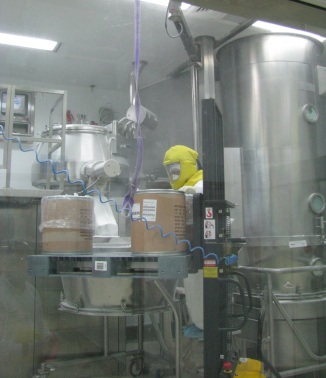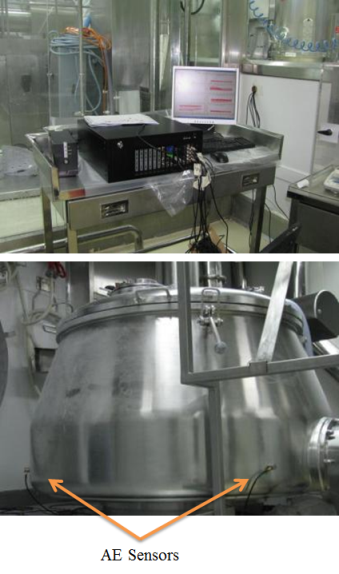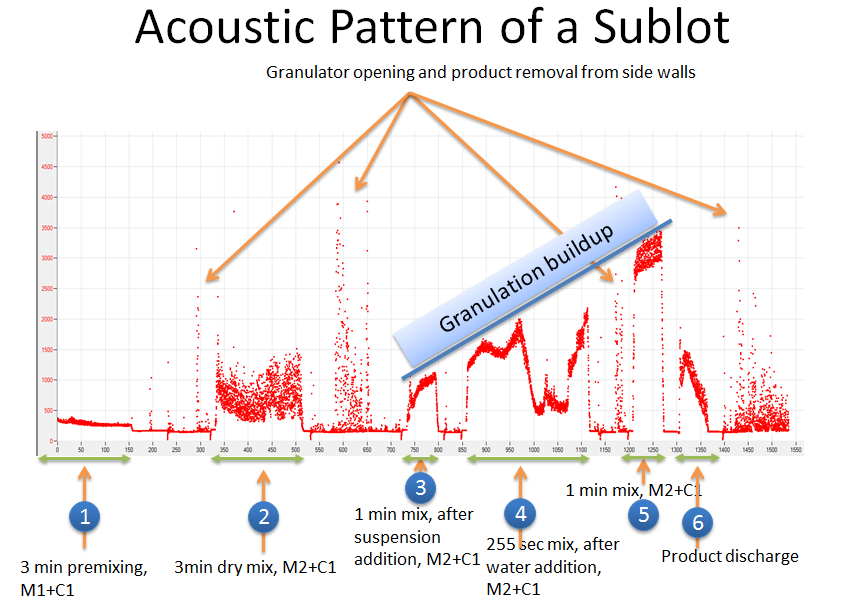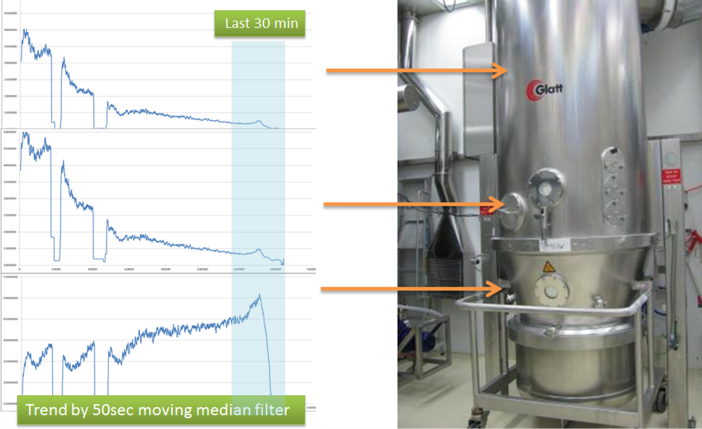
Acoustic emission technology is used for non-invasive monitoring and characterization of pharmaceutical processes including wet granulation, drying, continuous granulation, grinding and chopping, extrusion, drying, tableting, condition monitoring of rotating machinery such as mixers and choppers.
Acoustic emission monitoring of processes is based on detection of acoustic waves produced by friction. Detection of frictional waves is achieved by special piezoelectric sensors installed on the outer surface of pharmaceutical equipment. Analyzing frictional acoustics it is possible to identify process stages, end points, abnormal deviations, machinery faults and others.
Wet granulation
 Every step in granulation process reflected in unique acoustic pattern. Acoustic emission effectively used to detect:
Every step in granulation process reflected in unique acoustic pattern. Acoustic emission effectively used to detect:
- Granulation buildup.
- Over-mixing or insufficient mixing conditions.
- Improper suspension/water mixture in the product.
- Improper product removal from drum surfaces.
- Spikes of engine power.
Acoustic emission technology is capable to:
- Detect defective granulate batches and process steps when granulation fails.
- Detect improper drum cleaning and possibly their effect on a batch.
- Assessment of optimal mixing times.
- Record history of production for Q&C that includes all information about granulation, suspension/water addition and surface cleaning.
- Detect deviation of granulation process from the requirements.
- Monitoring condition of mixers and choppers.

Drying
Using acoustic emission it is possible effectively to identify drying process end without interruption of the process thus avoiding over-drying and saving time for unnecessary stops. AE monitoring is performed by externally installed sensors and do not require any special preparations.
